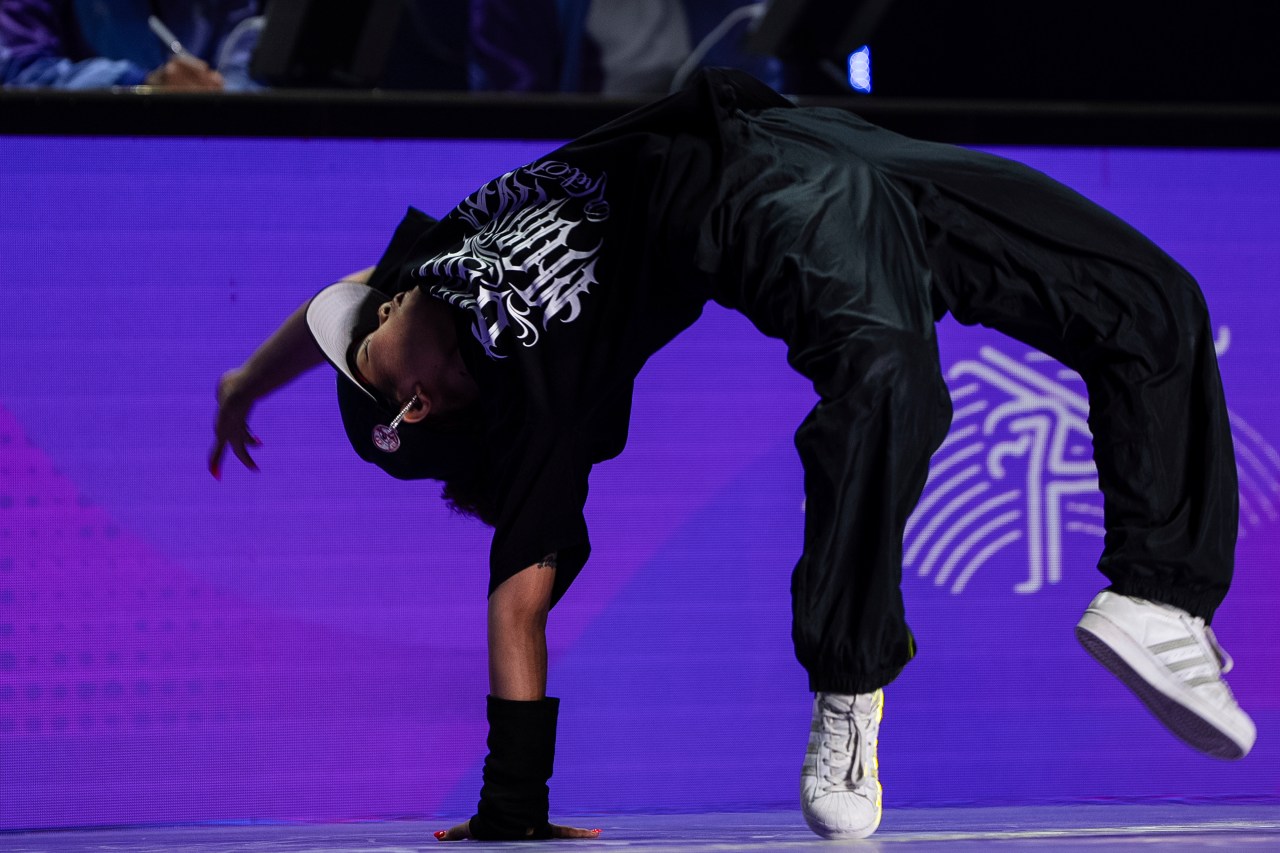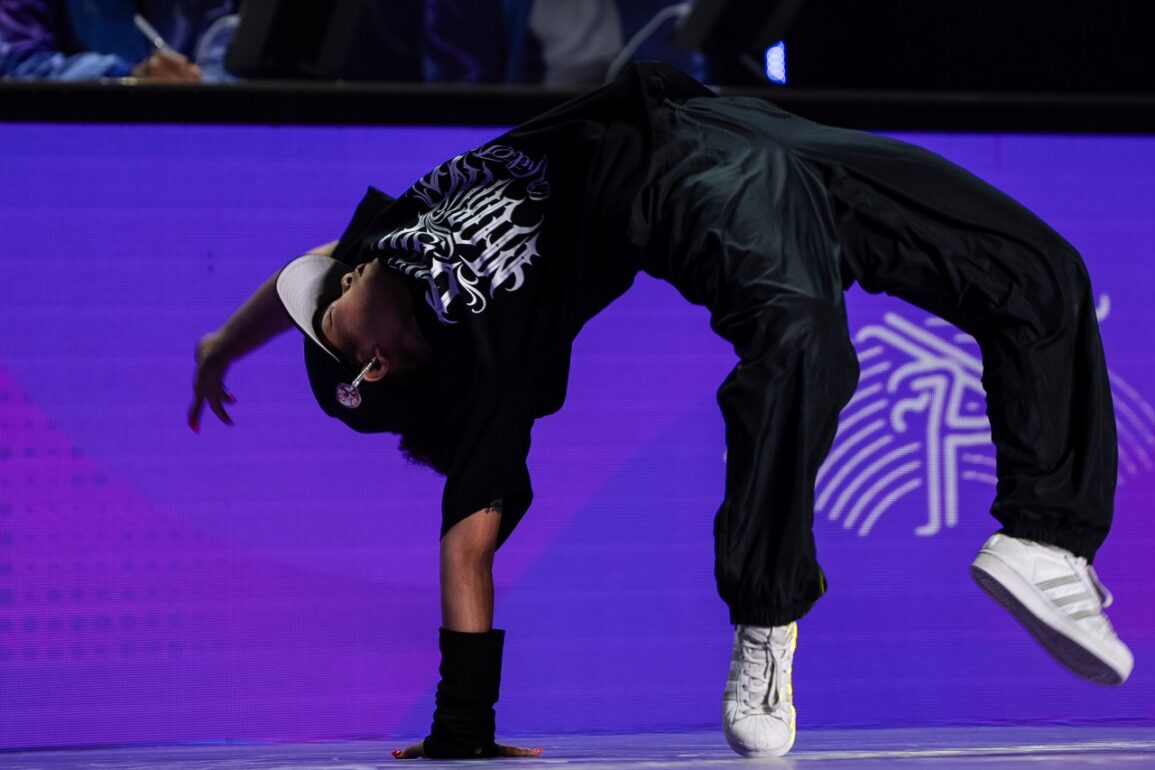
HANGZHOU, China (AP) — There’s a minor sports revolution going on in Mongolia, the giant landlocked Asian country most associated with Genghis Khan and famous for its “three manly sports” of archery, horse racing and, the most prestigious, wrestling.
The two-week Asian Games offer a glimpse at a changing Mongolia, a vast nation sandwiched between China and Russia with only 3.3 million people. Its ancient history is slowly giving way to the modern, including a growing passion for youth sports with breakdancing at the forefront.
Yes, breakdancing.
“There’s a huge potential in Mongolia to showcase that we are a powerhouse in breaking,” 25-year-old Khandjav Myagmarjav, the only woman on the four-person Mongolia breaking team at the Asian Games, told The Associated Press.
Breaking is included in next year’s Paris Olympics, so that’s the next big stage for Mongolia to show off its moves.
Despite its roots in street dance in urban America, the sport has surprisingly deep connections in Mongolia. It began to emerge after the country’s democratic revolution in 1990, which ended years of domination by the former Soviet Union.
“During the Soviet era before 1990 there was some small community practicing breakdancing, say in ‘86 or ’87,” Myagmarjav explained. “Since then there has always been a niche community promoting breakdancing. So it’s not something new in Mongolia. It was small and now it’s getting bigger.”
She said she got into it as as a child watching videos at home in the capital Ulaanbaatar and stuck with it.
“Then as a teenager I learned there was breakdance training in Mongolia, and I became part of it,” she said. “It’s true, women dancers are a minority in Mongolia. But women add flexibility and we have a different way of expressing ourselves through some movements.”
The breakdance medal round at the Asian Games was set for Saturday and Myagmarjav is ready.
“We are already known in Asia, but our ambition is to become a global powerhouse, and to draw attention to our country. So this is an opportunity,” she said.
Mongolia’s lone gold medal so far at the Asian Games was in boxing — a more traditional sport — where Chinzong Baatarsukh won in the men’s 57-63.5-kilogram class.
But two of four silver medals have come in women’s 3×3 basketball and esports. And there’s also a bronze medal in men’s 3×3 basketball, where Mongolia edged South Korea 21-20.
The rest of the medals have been spread out across judo, shooting, boxing, cycling and the wresting sport of kurash. Many of Mongolia’s Olympic medals traditionally have come in wrestling and, in these Asian Games, Mongolian men and women have won roughly the same number of medals.
Tugstur Dashzevge, who took a silver medal in esports — the multiplayer online battle arena Dota 2 video game competition — made his feelings known a few days ago after a close loss to a powerful Chinese team.
“There’s definitely a lot of pride in what we did,” he said. “Those are legendary, inspiring players right there (in China) and we almost beat them.
“It feels heavy, man,” he added.
Mongolia has just over 400 athletes at the Asian Games, less than half the size of large delegations from China, Japan or South Korea.
“It includes teams in some very new sports for women in Mongolia — football, cricket, wrestling and boxing,” said Amarasana Chimeddorj, deputy head of the delegation.
The average age of the men’s cricket team was reported to be 19, no surprise given that the country’s median age is only 29.8.
Monaco has the world’s oldest national average with a median age of 55.4, followed by Japan with 48.6. Ten African countries have the lowest median age, with Niger the lowest at 14.8.
Transitioning to the new has involved some pain. Nepal’s men’s cricket team smashed Mongolia in an early match, setting multiple records in the 273-run victory.
The long tradition of wrestling in Mongolia has produced a line of sumo wrestlers who have dominated the sport in Japan for several decades. The most famous might be Hakuho, a so-called Yokozuna, or grand champion. His Mongolian name is Mönkhbatyn Davaajargal — one of the best the sport has ever seen.
His late-father, who went by the given name of Monkhbat, was an Olympic silver medalist in 1968. He also competed at the 1964 Tokyo Olympics.
Majigsuren Tsogbadrakh is a 23-year-old journalist with Mongolian television TenGer. She called herself “a novice” breakdancer but has practiced with at least one member of the Mongolian team, Gan-Ulzii Ganbalt.
She’s aware of Mongolia’s traditions but says it’s time to move on.
“We were known for a long time for our nomadic lifestyle,” she said. “But our lifestyle is changing. In Mongolia, young people are interested in dance, fashion, in pop culture. We are all trying to change — in our own way — our identity to the world.
“My generation is trying to change the way Mongolia is seen,” she said. “We want to break the stereotypical image.”
___
AP sports: https://apnews.com/sports
This post was originally published on this site be sure to check out more of their content.









